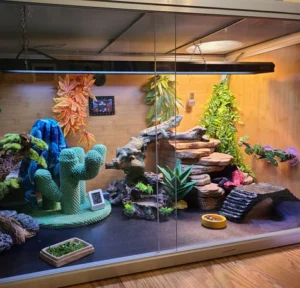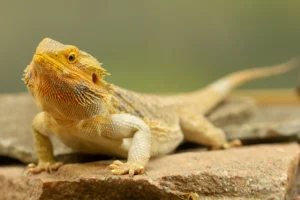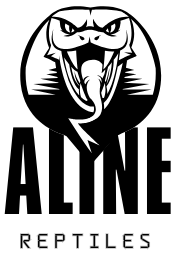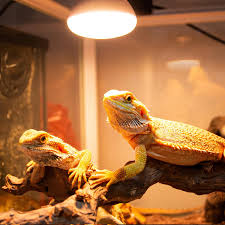Imagine basking under the warm sun, feeling the heat energize your body and keep you active. That’s exactly what a bearded dragon needs in captivity. A basking light for bearded dragon is not just an optional accessory—it’s essential for their health, digestion, and overall well-being.
Without proper basking light, bearded dragons can suffer from lethargy, improper digestion, and even metabolic bone disease.
In this guide, we’ll break down why basking lights are crucial, how to choose the right one, and how to set up the perfect basking environment for your scaly friend. Whether you’re a new reptile owner or a seasoned keeper looking to upgrade your setup, this article will provide everything you need to know.
Why Do Bearded Dragons Need a Basking Light?

Bearded dragons are native to the arid regions of Australia, where they spend most of their time basking in the sun. In captivity, they rely on artificial heat sources to mimic their natural environment. Basking lights serve several key functions:
Thermoregulation
Bearded dragons are ectothermic, meaning they rely on external heat sources to regulate their body temperature. Without a basking light, they cannot maintain the ideal temperature needed for metabolic functions.
Digestion and Appetite Stimulation
Heat plays a significant role in digestion. When a bearded dragon eats, the heat from the basking area helps break down food efficiently, ensuring proper nutrient absorption. Without adequate warmth, digestion slows down, leading to constipation or impaction.
UVB Absorption and Bone Health
A basking light that emits UVB is crucial for calcium metabolism. UVB rays help bearded dragons synthesize Vitamin D3, which is necessary for calcium absorption. A deficiency can lead to metabolic bone disease (MBD), a severe condition that causes weak bones and deformities.
Encouraging Natural Behavior
A proper basking light setup encourages a bearded dragon to exhibit natural behaviors such as basking, exploring, and hunting. Without it, they may become lethargic and less active.
| Function | Why It’s Important |
|---|---|
| Thermoregulation | Helps maintain optimal body temperature for activity and digestion. |
| Digestion | Aids in breaking down food efficiently after meals. |
| UVB Absorption | Prevents metabolic bone disease by aiding calcium absorption. |
| Activity Levels | Encourages natural behaviors such as basking, exploring, and hunting. |
Types of Basking Lights for Bearded Dragons

There are several types of basking bulbs available, each with its pros and cons. Here’s a breakdown:
Incandescent Heat Bulbs
These are the most common basking bulbs. They provide a good amount of heat and light, but they do not emit UVB. They are affordable and easy to find.
Halogen Basking Bulbs
Halogen bulbs produce more heat and are more energy-efficient compared to standard incandescent bulbs. However, they can become too hot if not monitored properly.
Mercury Vapor Bulbs
These bulbs provide both heat and UVB in a single unit, making them an excellent choice for large enclosures. However, they can be expensive and may produce excessive heat if not positioned correctly.
Ceramic Heat Emitters (CHEs)
These are used for providing heat without light. They are excellent for nighttime heating but must be used alongside a UVB bulb.
LED and UVB Bulbs
LED bulbs do not produce heat but can be combined with a separate heat source. UVB bulbs are essential for calcium absorption but need to be used in conjunction with a basking bulb.
| Type | Pros | Cons |
| Incandescent Heat Bulbs | Affordable, effective, easily available | Short lifespan, may not emit UVB |
| Halogen Basking Bulbs | Energy-efficient, strong heat output | Can get too hot if not monitored |
| Mercury Vapor Bulbs | Provides heat & UVB in one bulb | More expensive, can be too intense for small tanks |
| Ceramic Heat Emitters | Good for nighttime heat, long-lasting | No light output, must be used with UVB bulbs |
| LED and UVB Bulbs | UVB benefits, long-lasting | No heat output, must be combined with another heat source |
Choosing the Right Wattage and Temperature
Different wattages produce different levels of heat, and the right choice depends on your tank size.
Determining the Ideal Wattage
The wattage required depends on the tank size and the distance of the bulb from the basking area. Here’s a general guideline:
| Tank Size | Recommended Wattage | Ideal Basking Temp |
| 20–40 gallons | 50W–75W | 100–110°F |
| 50–75 gallons | 75W–100W | 100–110°F |
| 100+ gallons | 100W+ | 100–110°F |
Monitoring and Adjusting Temperatures
To ensure accuracy, always use a digital thermometer or infrared temp gun to monitor the basking spot’s temperature. Adjust the bulb’s height or wattage if temperatures are too high or too low.
Positioning the Basking Light Properly
The placement of your basking light determines how well it mimics natural sunlight.
- Distance from Basking Spot: The bulb should be 8–12 inches away from the basking area.
- Creating a Temperature Gradient: The hot side should be around 100–110°F, while the cool side should be 75–85°F.
- Avoiding Direct Contact: Use a heat lamp dome or stand to keep the bulb safely positioned.
Best Basking Lights for Bearded Dragons

Here are some top-rated basking lights recommended by reptile owners:
| Product | Type | Pros | Best For |
| Zoo Med Repti Basking Spot Lamp | Incandescent | Affordable, good heat output | Small to medium tanks |
| Exo Terra Solar Glo | Mercury Vapor | Provides heat & UVB in one | Large enclosures |
| Fluker’s Ceramic Heat Emitter | Ceramic | No light, good for night use | Nighttime heating |
| Zoo Med PowerSun UVB | Mercury Vapor | UVB & heat combo | All-in-one solution |
Conclusion
A basking light for bearded dragon is one of the most crucial components of their habitat. Without it, they can’t regulate their temperature, digest food, or stay active. Choosing the right type, wattage, and placement ensures your bearded dragon stays healthy and happy.
By following this guide, you can create a safe, comfortable basking setup that mimics their natural environment. Regularly check temperatures, replace bulbs when necessary, and always observe your dragon’s behavior for signs of discomfort.

